"One if by land and two if by sea..." This was the historic signal for alert in the days of Paul Revere, in the Revolutionary War year of 1775. This system of early warning alarm was indeed satisfactory. However, with the Twentieth Century boasting high-speed surface vessels and supersonic jet aircraft, it has become necessary to find the invader and alert defending forces as soon as possible.
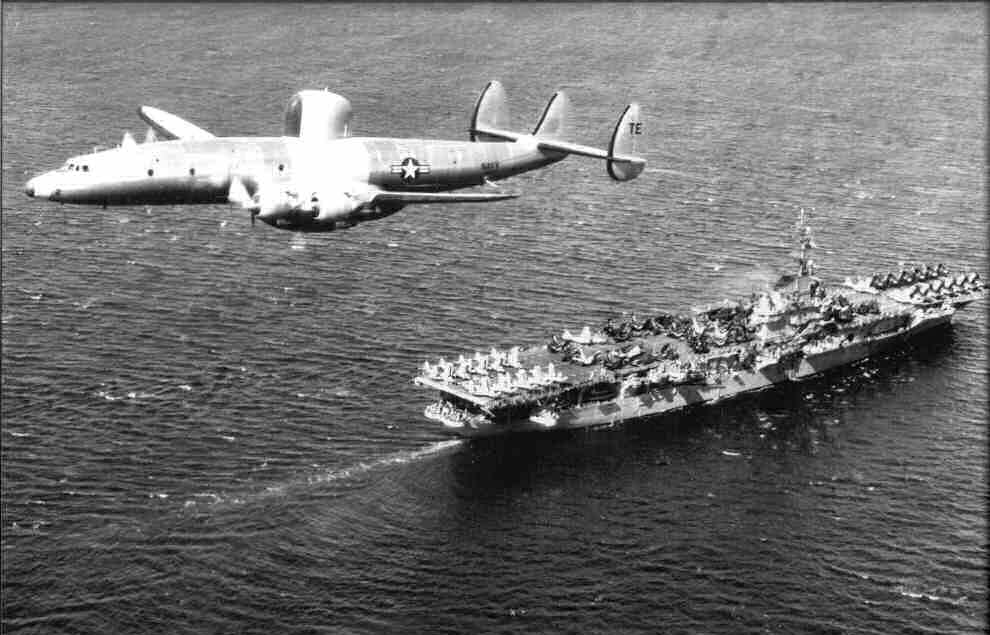 ....Super Connie number two.
....Super Connie number two.USN Photo provided by Bill Green
With atomic-laden attack aircraft flying faster than the speed of sound, an entirely new concept of preliminary warnings of impending attack has come into existence, making Paul Revere's lanterns obsolete.
For the Navy's new Lockheed Super-Constellations, operated by airborne Early Warning Squadron One, and its Detachment Able at Atsugi are the antithesis of Paul Revere's slow and lengthy midnight ride.
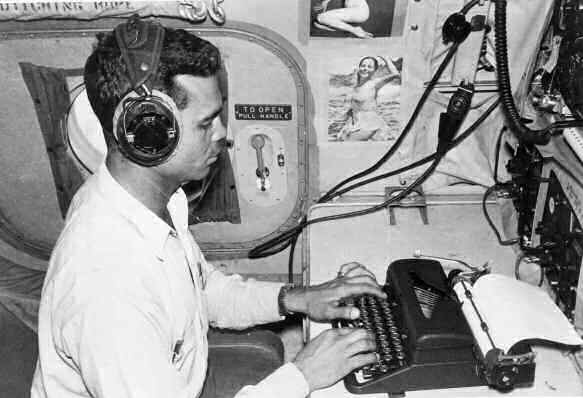 Radioman, types up message report
Radioman, types up message reportphoto courtesy Jim Laposta
The crew of 27 men flying the Super-Connies can spot an invader and follow his flight from hundreds of miles away, without ever actually sighting the intruder. Equipped with 6 tons of the latest electronic devices, the huge four-motor planes can fly from Atsugi to Honolulu nonstop, performing their mission despite rain, fog, or darkness. Three complete sets of maintenance gear are stored on board, permitting in flight repair.
Externally, the airplane looks like the Super Constellation airliner, with the famed triple-tail trademark of Lockheed, but all resemblances halt there. The VW-1 Connies have a seven foot dome atop the fuselage and a mushroom shaped bubble underneath; both housing powerful radar antennas.
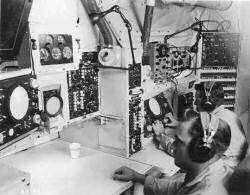 CICO (forground) Radarman (background)
CICO (forground) Radarman (background)photo courtesy Dan Ragan
Working, in close liaison with task forces, including carrier submarine units the early warning team a1so volunteers its services to search and rescue missions, reconnaissance, weather observation and submarine detection.
When necessary, cameras record automatically any picture on the radarscope for future reference, Similar to TV, this radar picture which the plane receives can be relayed to another aircraft directing attack operations, or to surface vessels in the area.
The giant plane, which is like a space ship because of its long flight hours and range, is maintained by a crew of well-trained and coordinated technicians. Five technicians in charge of the radar operations are especially selected and trained for both operation and maintenance of the special electronics gear. Trained at the factory, they are required to make repairs in flight. All officers must be graduates of the Combat Information Center School at Glenview, Ill., and pilots generally are veteran air transport pilots with thousands of hours at the controls of multi-engine aircraft. The flight engineers are well trained for emergencies, and around them revolves the entire safety of the aircraft.
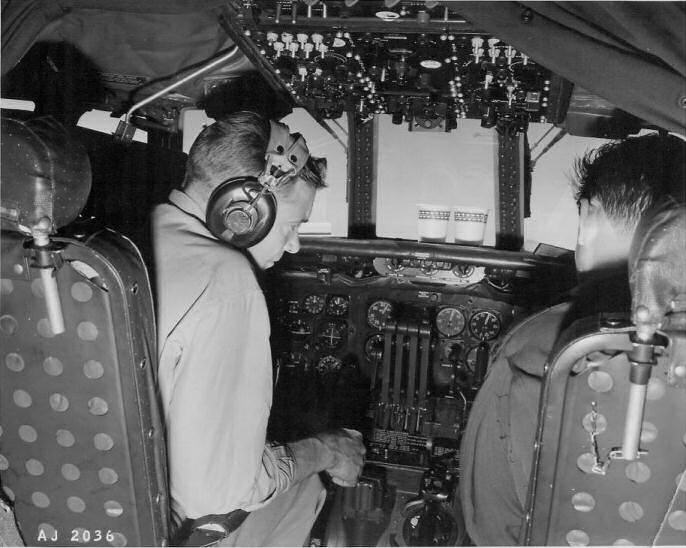 .... Plane Commander and Co-Pilot
.... Plane Commander and Co-PilotUSN photo provided by Dan Ragan.
Every man from pilot to CIC officer has a relief, and the rotation of personnel is done so smoothly... that the plane flies with clocklike precision.
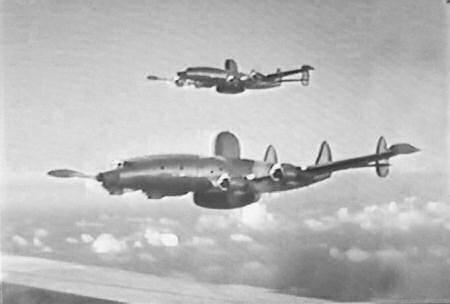 VW-1 planes
VW-1 planesphoto courtesy Dan Ragan
Circumstances aboard the huge aircraft are similar to submarine duty because the crew flies for such long periods of time that they must have personalities that will easily blend together. Tensions which bring men's nerves to the breaking point must not exist here. These men have developed their own jumble lingo which can usually ease such tensions with a hearty laugh. It would be hard for an outsider to understand this lingo, for it sounds like a concoction of Hawaiian, Japanese, Tagalog, and Chinese with a little broken English thrown in.
Eating in this space cafe is another problem that is handled in a spirit of cooperation. No one is assigned mess duties. Some how everyone seems to get a full meal consisting of everything from ham and eggs to steaks and spuds, cooked on the spot by one or more volunteers.
At least one thing can be said about these space ships when they are cruising at 20,000 feet in their modern Paul Revere role: their steaks, morale, and efficiency are among the best in the world.

